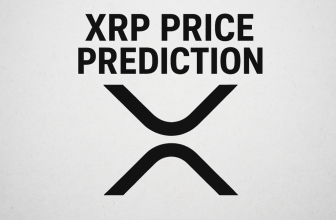
In a world fueled by rapidly evolving technology and a desire for financial independence, the realm of cryptocurrency has emerged as a powerful force. With its potential for substantial gains and the allure of being part of a groundbreaking movement, many individuals are eager to dive into crypto trading. However, navigating this dynamic market can only be daunting with the proper knowledge and approach.
Welcome to the gateway of success! In this article, we unravel the secrets of becoming a prosperous crypto trader, guiding you through seven easy steps to elevate your trading game to new heights. Whether you’re a novice investor or a seasoned professional, this concise roadmap will equip you with the skills and strategies needed to confidently navigate the thrilling world of cryptocurrency. Are you ready to embrace the challenge and redefine your financial future? Let’s dive in!
What you'll learn 👉
Step 1: Understanding the Basics
In the fast-paced and ever-evolving world of cryptocurrency trading, beginning your journey by understanding the basics is crucial. Building a solid foundation of knowledge and grasping the fundamental concepts will empower you to make informed decisions, navigate the complexities of the market, and increase your chances of success. Here’s why understanding the basics is essential:
Gain a Clear Understanding of Cryptocurrency
- Familiarize yourself with the concept: Start by understanding what cryptocurrencies are and how they differ from traditional forms of currency. Learn about blockchain technology, decentralization, and the underlying principles that make cryptocurrencies unique.
- Explore different types of cryptocurrencies: Dive into the diverse world of cryptocurrencies and learn about the most popular ones, such as Bitcoin and Ethereum, as well as emerging altcoins. Understand their purposes, features, and potential applications.
Learn About Market Dynamics and Volatility
- Understand market forces: Grasp the factors that drive cryptocurrency prices, such as supply and demand dynamics, market sentiment, regulatory developments, and technological advancements.
- Acknowledge market volatility: Recognize that the crypto market is highly volatile, with prices experiencing significant fluctuations. Understanding this volatility is crucial for managing risk and making well-timed trading decisions.
Become Familiar with Exchanges and Wallets
- Explore cryptocurrency exchanges: Learn about different types of exchanges, their features, and the process of buying, selling, and trading cryptocurrencies. Understand concepts like order types, trading pairs, and liquidity.
- Understand wallet types: Gain knowledge about cryptocurrency wallets, including hot wallets (online) and cold wallets (offline). Learn how to secure your digital assets and protect against potential security threats.
Learn Key Trading Concepts
- Grasp the concept of trading pairs: Understand how cryptocurrencies are paired for trading, such as Bitcoin-to-USD or Ethereum-to-BTC. Learn how to read and interpret trading pairs and their corresponding price charts.
- Explore order types: Familiarize yourself with various orders, such as market orders, limit orders, and stop orders. Understand how to execute these orders effectively based on your trading strategy.
Step 2: Setting Clear Goals
Setting clear goals is a vital step in becoming a successful crypto trader. By defining your objectives, you can establish a clear direction, stay focused, and make strategic decisions aligned with your desired outcomes. Here’s why setting clear goals is essential and how to go about it:
Establish a Sense of Purpose
- Understand the importance of purpose: Setting goals gives you a sense of purpose and helps you stay motivated throughout your trading journey. It provides a framework for your actions and decisions.
- Reflect on your aspirations: Consider why you want to engage in crypto trading. Are you aiming for financial independence, wealth accumulation, or personal growth? Defining your aspirations will guide your goal-setting process.
Define Specific and Measurable Goals
- Make your goals specific: Clearly define what you want to achieve in the crypto market. For example, your goal could be to generate a certain percentage of return on investment or accumulate a specific amount of cryptocurrency.
- Ensure measurability: Frame your goals in a way that allows you to measure your progress objectively. Use quantifiable metrics like profit targets, portfolio value, or trading performance indicators.
Set Realistic and Time-Bound Goals
- Be realistic: Set achievable goals within your capabilities, considering your trading experience, available resources, and market conditions. Unrealistic goals can lead to frustration and disappointment.
- Establish time frames: Assign specific time frames to your goals to create a sense of urgency and track your progress effectively. For example, set a monthly, quarterly, or annual target.
Break Down Goals into Milestones
- Divide big goals into smaller milestones: Break your primary goals into smaller, manageable tasks or targets. This allows you to track your progress incrementally and stay motivated.
- Celebrate milestones: Acknowledge and celebrate each milestone achieved. This reinforces your progress, boosts confidence, and maintains your motivation for further advancement.
Regularly Review and Adjust Goals
- Monitor and assess your progress: Regularly review and track your goals. Evaluate your performance, analyze your trading strategies, and identify areas for improvement.
- Adjust goals as needed: Be flexible and adapt your plans when necessary. Market conditions, personal circumstances, and evolving trading strategies may require you to modify your objectives to stay aligned with your vision.
Step 3: Building a Diverse Portfolio
Building a diverse portfolio is crucial for mitigating risk and maximizing potential returns in cryptocurrency trading. A well-diversified portfolio allows you to spread your investments across different cryptocurrencies, reducing the impact of any single asset’s performance on your overall portfolio. Here’s how you can build a diverse portfolio:
Research and Understand Different Cryptocurrencies
- Explore various cryptocurrencies: Conduct thorough research on different cryptocurrencies available. Understand their purposes, underlying technology, market capitalization, and growth potential.
- Analyze project fundamentals: Evaluate the team behind the project, its partnerships, use cases, and the overall market demand for the cryptocurrency. Consider the project’s roadmap, community engagement, and regulatory compliance.
Allocate Your Portfolio Across Different Categories
- Core cryptocurrencies: Allocate a portion of your portfolio to well-established cryptocurrencies like Bitcoin (BTC) and Ethereum (ETH). These core cryptocurrencies often serve as a foundation for many portfolios due to their large market capitalization and liquidity.
- Mid-cap and small-cap cryptocurrencies: Consider investing in mid-cap and small-cap cryptocurrencies with promising potential. These projects may offer higher growth opportunities, but they also come with increased risks. Diversify within this category to spread risk further.
- Tokens with specific use cases: Look for tickets to particular purposes within blockchain ecosystems or industries. For example, utility tokens for decentralized finance (DeFi), non-fungible tokens (NFTs), or supply chain management. This helps you diversify your exposure to different sectors and trends within the crypto market.
Keep an Eye on Market Capitalization and Liquidity
- Consider market capitalization: Evaluate the market capitalization of cryptocurrencies you are considering for your portfolio. Generally, higher market capitalization indicates more liquidity and stability.
- Assess liquidity: Ensure that the cryptocurrencies in your portfolio have sufficient trading volume and liquidity. Higher liquidity allows easier buying and selling without significantly impacting the market price.
Regularly Review and Rebalance Your Portfolio
- Periodic portfolio review: Regularly assess your portfolio’s performance and the market conditions. Review the version of individual assets and their alignment with your investment goals.
- Rebalance when needed: Adjust your portfolio allocation by buying or selling cryptocurrencies to maintain your desired diversification ratio. Rebalance your portfolio periodically to align with your risk tolerance and market trends.
Step 4: Risk Management and Strategy
Risk management and strategy are essential components of successful crypto trading. By implementing effective risk management techniques and developing a well-defined trading strategy, you can protect your capital, minimize potential losses, and increase your chances of consistent profitability. Here’s what risk management entails and how to incorporate it into your trading approach:
Define Risk Management Parameters
- Set a risk-reward ratio: Determine the balance between each trade’s potential profit and loss. Aim for a favorable risk-reward ratio that aligns with your risk tolerance and trading strategy.
- Determine position sizing: Decide how much of your capital to allocate to each trade. Avoid risking a significant portion of your money on a single transaction, which could lead to substantial losses.
- Establish stop-loss orders: Implement stop-loss orders to automatically exit a trade if the price reaches a predetermined level. This helps limit potential losses and protects against adverse market movements.
Diversify Your Portfolio
- Spread risk across multiple assets: As discussed in Step 3, build a diversified portfolio. Allocating your investments across different cryptocurrencies and categories can reduce the impact of any single asset’s poor performance on your overall portfolio.
- Consider non-correlated assets: Include assets that have a low or negative correlation with each other. This means their price movements don’t tend to move in the same direction simultaneously. Diversifying across non-correlated assets can further mitigate risk.
Develop and Follow a Trading Strategy
- Define your trading approach: Determine the type of trader you want to be (e.g., day trader, swing trader, long-term investor) and establish a strategy that aligns with your goals, risk tolerance, and available time commitment.
- Conduct thorough analysis: Use fundamental, technical, or a combination to identify potential entry and exit points for trades. Base your decisions on solid research, market indicators, and reliable trading signals.
- Stick to your strategy: Follow it consistently once you have established a trading strategy. Avoid making impulsive or emotionally driven decisions that deviate from your plan.
Maintain Discipline and Emotional Control
- Stick to your plan: Avoid making impulsive decisions based on fear or greed. Follow your risk management parameters, entry and exit rules, and trading strategy.
- Manage emotions: Control your emotions during trading, as they can cloud judgment and lead to irrational decisions. Develop strategies to manage stress, such as taking breaks, practicing mindfulness, and maintaining a healthy work-life balance.
Step 5: Technical Analysis and Charting Tools
Technical analysis is crucial in cryptocurrency trading as it helps traders make informed decisions based on historical price data and market trends. By studying price patterns, indicators, and charting tools, traders can identify potential entry and exit points, predict price movements, and manage their trades effectively. Here’s an explanation of the technical analysis and the critical charting tools used in crypto trading:
Understanding Technical Analysis
- Technical analysis overview: Technical analysis evaluates historical price data and market statistics to forecast future price movements. It assumes that historical price patterns and trends can provide insights into future market behavior.
- Market psychology: Technical analysis considers that market participants’ collective behavior, emotions, and supply and demand dynamics are reflected in price patterns. By analyzing these patterns, traders attempt to anticipate future price movements.
Key Charting Tools
- Candlestick charts: Candlestick charts are widely used in technical analysis. They display price information for a given period, showing the opening, closing, high, and low prices. Candlestick patterns provide visual cues about market sentiment and potential trend reversals.
- Trend lines are lines drawn on a price chart to connect consecutive higher lows or lower highs. They help identify the direction of the market trend and can act as support or resistance levels.
- Moving averages: Moving averages smooth out price fluctuations over a specified period, providing a trend-following indicator. Commonly used moving averages include the simple moving average (SMA) and the exponential moving average (EMA).
- Relative Strength Index (RSI): The RSI is a momentum oscillator that measures the speed and change of price movements. It helps identify overbought and oversold conditions, indicating potential trend reversals.
- Bollinger Bands: Bollinger Bands consist of a moving average and two standard deviation lines above and below it. They provide a visual representation of price volatility and potential price breakouts.
Technical Analysis Strategies
- Support and resistance levels: Support levels are price levels where buying pressure is expected to prevent further price decline. In contrast, resistance levels are price levels where selling pressure may prevent further price increases. Traders use these levels to identify potential entry and exit points.
- Chart patterns: Technical analysis involves identifying chart patterns, such as triangles, head and shoulders, double tops, and double bottoms. These patterns provide insights into potential trend reversals or continuation.
- Indicator-based strategies: Traders often use indicators like Moving Average Convergence Divergence (MACD), stochastic oscillators, and Fibonacci retracement levels to generate trading signals and confirm price movements.
Utilizing Charting Tools
- Selecting a charting platform: Choose a reliable platform offering a wide range of charting tools and technical indicators specifically tailored for cryptocurrency trading.
- Customizing chart settings: Customize your charting platform liek you do in Bitcoin Era to display the desired time frames, indicators, and chart types that suit your trading strategy and preferences.
- Conducting technical analysis: Analyze price charts, apply technical indicators, and observe patterns to identify your trades’ potential entry and exit points.
- Integrating fundamental analysis: Combine technical analysis with fundamental analysis to comprehensively understand the cryptocurrency you are trading. Fundamental factors like project news, partnerships, and market developments can complement technical analysis signals.
Conclusion
Becoming a successful crypto trader requires knowledge, skills, and strategic decision-making. Following these steps and maintaining discipline, emotional control, and a commitment to learning can increase your chances of becoming a successful crypto trader. Remember, practice and experience are essential, so start small, track your progress, and continuously improve your trading skills.
Happy trading! Staying informed and adaptable will be crucial as the crypto market continues to grow and evolve. Embrace the exciting and ever-changing world of crypto trading, and may your journey be filled with success and prosperity.








